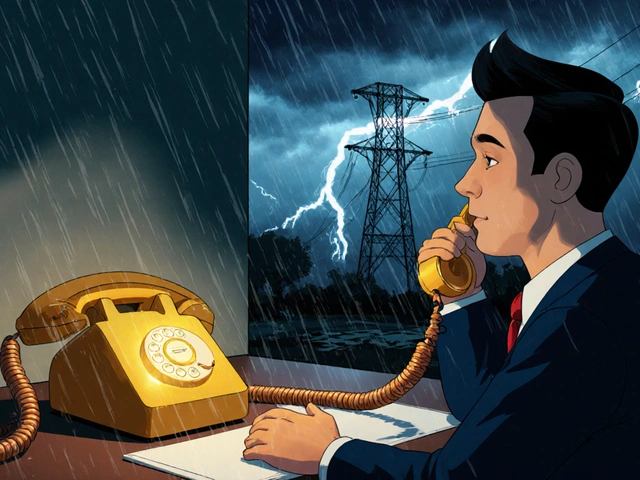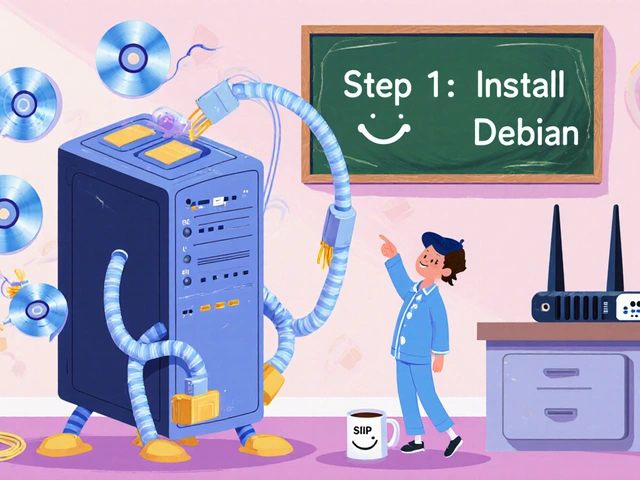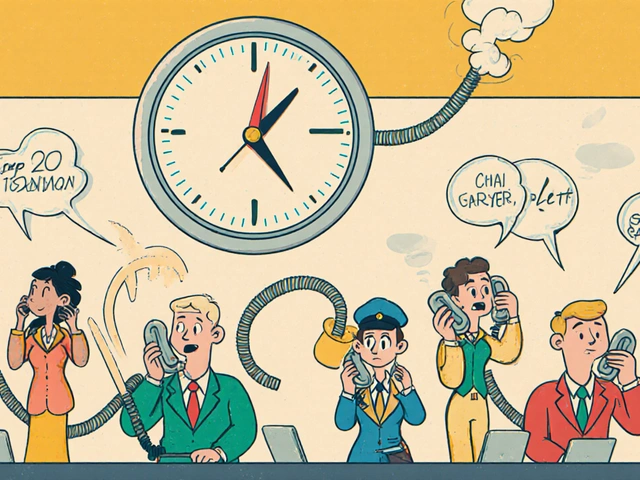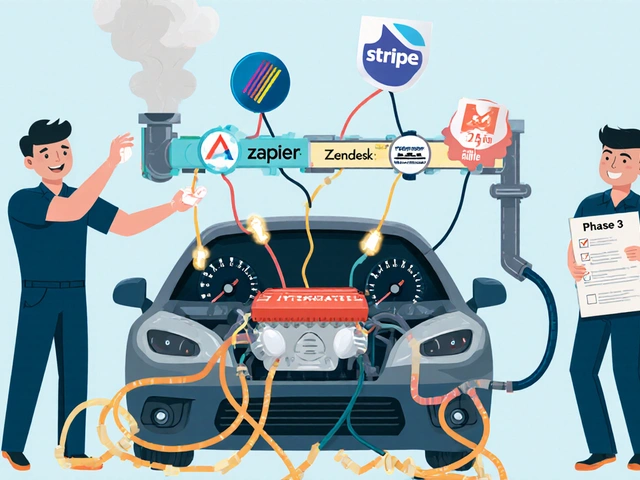Cloud phone systems promise flexibility, scalability, and lower upfront costs-but they also come with real, measurable downsides that can cripple your business if you ignore them. You might think switching to a cloud-based phone system is just a simple upgrade, like moving from a flip phone to a smartphone. But the truth is, your phone system is the nervous system of your business. If it fails, so does communication. And cloud systems have a single point of failure: your internet connection.
Internet Dependency Isn't Just a Minor Inconvenience
Every call, every voicemail, every conference bridge runs over your internet. That means if your Wi-Fi stutters, your router overheats, or your ISP has an outage, your phone system goes silent. Unlike traditional landlines that still work during power outages (because they’re powered by the phone line itself), cloud phones need electricity for your router, modem, and phones. A 2023 analysis of 450 businesses found that during a power outage, cloud systems average 73 minutes of downtime. That’s not a glitch-it’s a business interruption.
Even with a strong internet plan, call quality suffers under network stress. OnSIP’s 2024 technical specs say call quality drops sharply if you have more than 1% packet loss, jitter over 30ms, or latency above 150ms. In real-world offices, 47% of IT pros reported call quality issues during peak hours. A retail store in Wisconsin lost $42,000 in Black Friday sales because their cloud system crashed when 30 employees tried to make outbound calls at once. Their internet was fine for email and browsing-but not for voice traffic.
Hidden Costs Add Up Faster Than You Think
Most providers advertise $15-$50 per user per month. Sounds cheap, right? But that’s just the base price. Look closer, and you’ll find fees hiding in the fine print. Sixty-two percent of providers charge extra for international calls-$0.02 to $0.15 per minute. That adds up fast if you have clients in Europe or Asia. Forty-eight percent charge $10-$30 monthly for call analytics. Thirty-three percent charge for storing call recordings-$0.005 to $0.02 per minute. One manufacturing company with 80 employees and 500 daily outbound calls ended up paying $1,200 extra per month just for recording storage.
And don’t forget infrastructure. Unity Connect’s 2024 report found 68% of businesses needed new routers or switches to handle VoIP traffic. Those upgrades cost $500-$2,500 per location. If you have three offices? That’s $1,500-$7,500 before you even sign a contract. And if your Wi-Fi has dead zones? You’ll need access points or a wired solution. Softphones on laptops won’t work if the signal drops in the warehouse or the conference room.
Security Gaps Are Real-and Exploited
Providers claim their systems are secure. They use SRTP encryption and TLS 1.3. But security isn’t just about encryption-it’s about configuration. The 2023 Verizon Data Breach Report documented 1,842 VoIP-specific breaches. The biggest culprit? Misconfigured admin portals. Coeo Solutions found 41% of breaches happened because someone didn’t enable multi-factor authentication on their cloud phone system dashboard.
Vishing attacks-voice phishing-are rising. Attackers call employees pretending to be IT, tricking them into giving away login credentials. Weak passwords make it easy. And if you’re in healthcare or finance, compliance adds another layer of risk. Fifty-two percent of healthcare providers using cloud systems failed HIPAA audits because call recordings weren’t encrypted properly. Thirty-seven percent of financial firms failed PCI DSS audits due to poor handling of cardholder data during calls.

Provider Reliability Isn’t Guaranteed
Companies like RingCentral and 8x8 advertise 99.999% uptime. That sounds perfect. But that’s the provider’s promise, not your reality. The 2023 Cloud Communications Outage Report tracked 14 major outages affecting 2.3 million users. Average resolution time? 4.7 hours. IDC calculated that during those outages, businesses lost $18,350 per hour in productivity.
And not all providers are created equal. Twenty-two percent of smaller cloud phone vendors don’t have basic certifications like SOC 2 Type II or ISO 27001:2022. They market “enterprise-grade” security, but their infrastructure might be hosted on shared cloud servers with no real redundancy. If they go under, your phone system could vanish overnight-with no way to port your numbers or access recordings.
Implementation Is a Minefield
Most businesses assume cloud phone systems are plug-and-play. They’re not. Dr. Linda Kirkland of Nemertes Research says 68% of organizations need 3-6 months of network assessment before they can even begin deployment. Gartner found 57% of failed implementations were due to bad bandwidth planning. Small businesses, especially, get burned because they don’t have IT teams to test QoS settings, prioritize voice traffic, or configure VLANs.
Training is another hidden cost. Non-technical staff need 8-12 hours to learn how to use softphones, transfer calls, or set up voicemail greetings. IDC reports 63% of companies see a drop in productivity for the first 30 days after switching. Employees who used to just pick up a phone now have to open an app, deal with Bluetooth pairing, and figure out why their headset isn’t working. Resistance isn’t just attitude-it’s a productivity drain.
Support Is Inconsistent and Often Unavailable
When your phone system fails, who do you call? Your provider’s support team. But JD Power’s 2024 study showed wide gaps in service quality. Providers scored between 320 and 892 on a 1,000-point scale. And 78% offer limited weekend support-even though 43% of outages happen after hours. One Wisconsin dentist had a system crash on a Sunday morning. No one answered until Tuesday. Patients couldn’t book appointments. The office lost $9,000 in revenue.
Documentation is often useless. TechValidate found only 31% of cloud phone systems come with clear troubleshooting guides for network issues. That means IT teams spend hours building their own manuals instead of fixing problems. And if you’re using a lesser-known provider? You might be on your own.

Compliance and Regulations Are Getting Tighter
Regulators aren’t ignoring cloud telephony. The FCC’s 2024 Kari’s Law update requires all VoIP systems to automatically dial 911 without needing a prefix. That means software updates, hardware checks, and testing-adding $200-$500 per location. For companies with multiple offices, that’s thousands in unexpected costs.
If you operate internationally, GDPR and other data privacy laws complicate things. Thirty-eight percent of multinational firms struggle with cross-border call data storage. Where are recordings kept? Who has access? Can you prove compliance? Many cloud providers store data in multiple regions without clear disclosure. That’s a legal risk you can’t afford to ignore.
What Works? Real Solutions from Real Businesses
It’s not all doom and gloom. Companies that succeed with cloud phones don’t just buy the system-they plan for failure. Acme Corporation, featured in TechRadar’s 2024 case study, fixed their issues by doing three things:
- Upgraded to business-class internet with 50Mbps dedicated upload speed
- Installed QoS (Quality of Service) to prioritize voice traffic
- Added 4G LTE failover-a cellular backup router that kicks in when internet drops
Result? Call quality issues dropped by 92%. They also trained staff before rollout and tested the system under simulated network stress. That’s the difference between a failed migration and a smooth transition.
Hybrid solutions are growing fast. IDC reports 52% of enterprises now use systems with on-premise failover. If the cloud goes down, calls route through a local server. It’s not cheap-it adds 15-25% to initial costs-but it prevents $14,000 in hourly revenue loss during outages.
Is a Cloud Phone System Right for You?
Cloud phone systems aren’t inherently bad. They’re powerful, scalable, and cost-effective-if you do the work upfront. But if you treat them like a simple app download, you’re setting yourself up for disruption.
Ask yourself:
- Do we have reliable, high-speed internet with dedicated upload bandwidth?
- Have we tested our network for jitter, latency, and packet loss?
- Are we prepared for the hidden costs of upgrades, international calls, and storage?
- Do we have a backup plan for power or internet outages?
- Is our IT team trained to manage QoS, VLANs, and VoIP security?
- Are we compliant with HIPAA, PCI DSS, or GDPR if applicable?
If you answered no to more than two of these, you’re not ready. Don’t rush. Test. Plan. Budget for failure. Cloud phone systems can transform your business-but only if you treat them like critical infrastructure, not just another SaaS tool.
Do cloud phone systems work during power outages?
No. Unlike traditional landlines that get power from the phone line, cloud phone systems rely on electricity for your router, modem, and phones. If the power goes out, your system goes offline unless you have a backup generator or battery-powered failover solution.
Are cloud phone systems more secure than traditional systems?
Not necessarily. While cloud providers use strong encryption, most breaches happen because of weak passwords, unsecured admin portals, or misconfigured settings. Traditional systems are physically isolated, making them harder to hack remotely. Cloud systems are only as secure as your internal practices.
Why do cloud phone systems have hidden fees?
Providers use low monthly prices to attract customers, then charge extra for features most businesses need: international calling, call recording storage, advanced analytics, and premium support. These add-ons aren’t optional-they’re necessary for operations, making the total cost much higher than advertised.
Can I keep my existing phone numbers if I switch to a cloud system?
Yes, you can port your numbers. But the process can take 2-6 weeks, and some providers charge $10-$25 per number. Make sure your new provider handles porting and confirm your old service won’t be disconnected until the transfer is complete.
What’s the biggest reason cloud phone systems fail?
Poor network preparation. Many businesses skip testing bandwidth, QoS settings, and Wi-Fi coverage. When calls drop or sound robotic, they blame the system-not their internet. Upgrading your network before deployment is the single most important step to avoid failure.
Is a hybrid phone system worth the extra cost?
For businesses that can’t afford downtime, yes. Hybrid systems use the cloud for daily operations but have a local backup server that keeps calls running during internet or power outages. It adds 15-25% to the initial cost, but prevents losses of $14,000+ per hour during outages.
Before you sign a contract, run a 72-hour network stress test. Use your phones like you normally would-make calls, transfer them, record voicemails. If you see dropped calls or lag, fix your network first. Cloud phone systems are powerful-but they don’t fix bad infrastructure. They expose it.










Write a comment